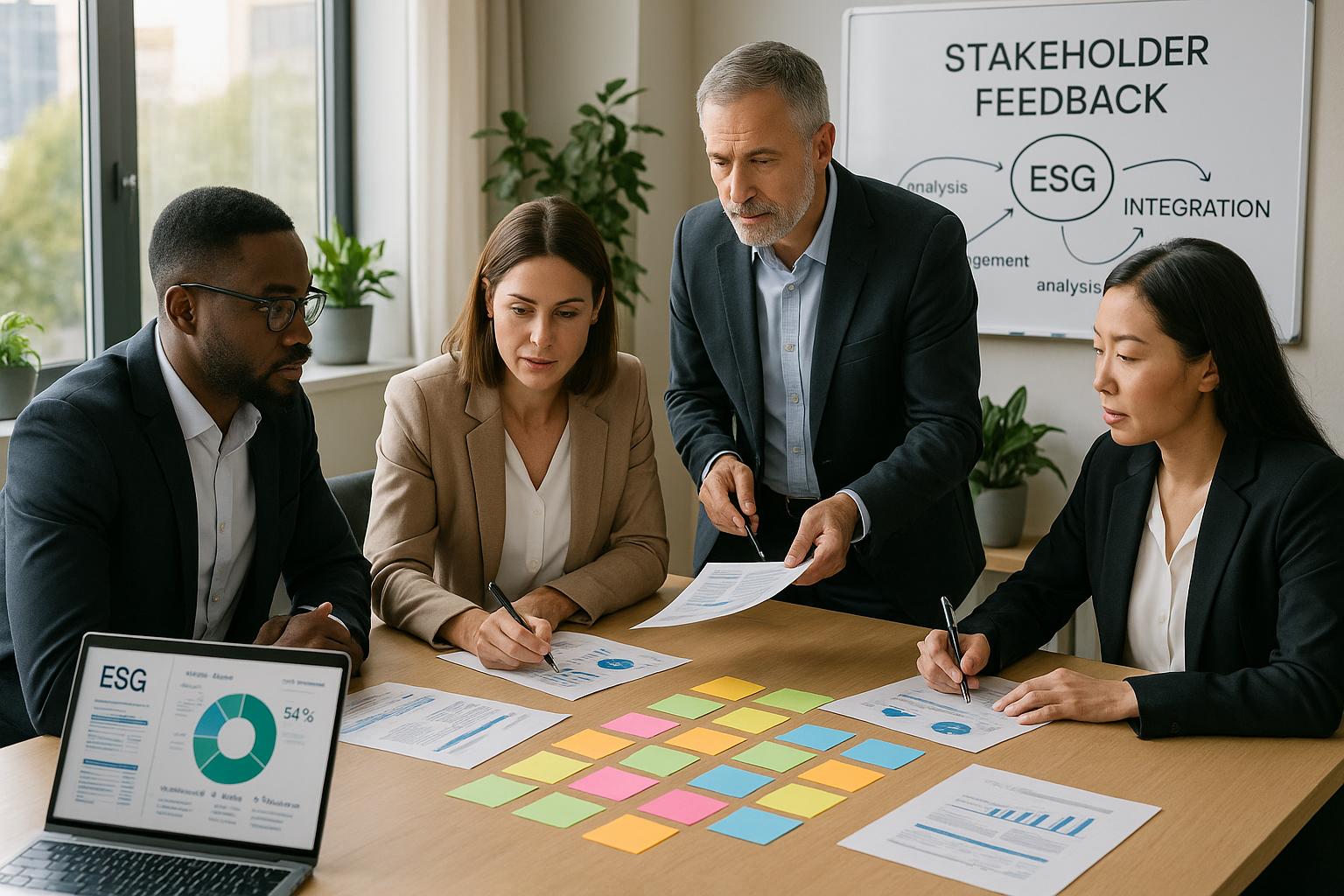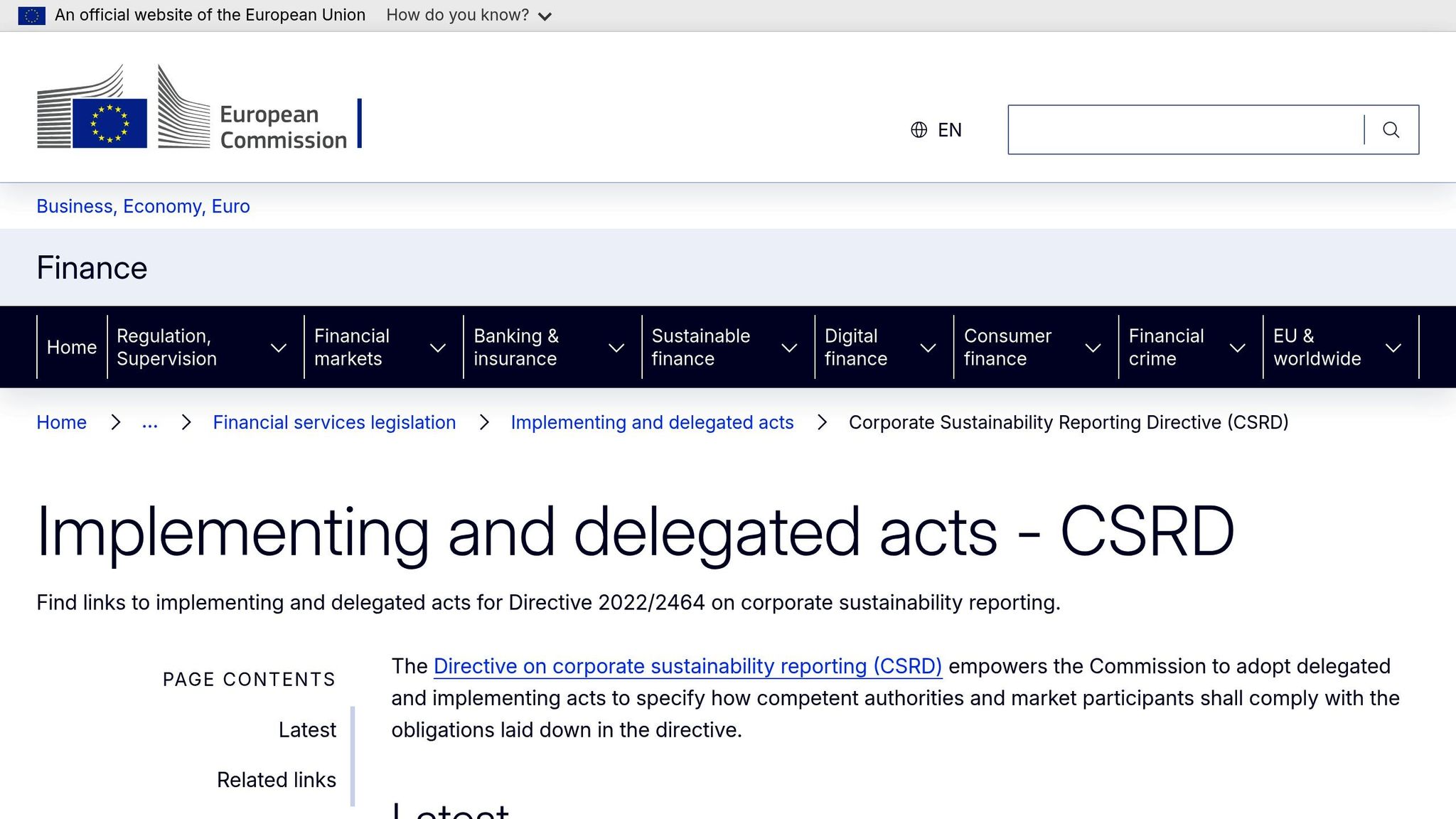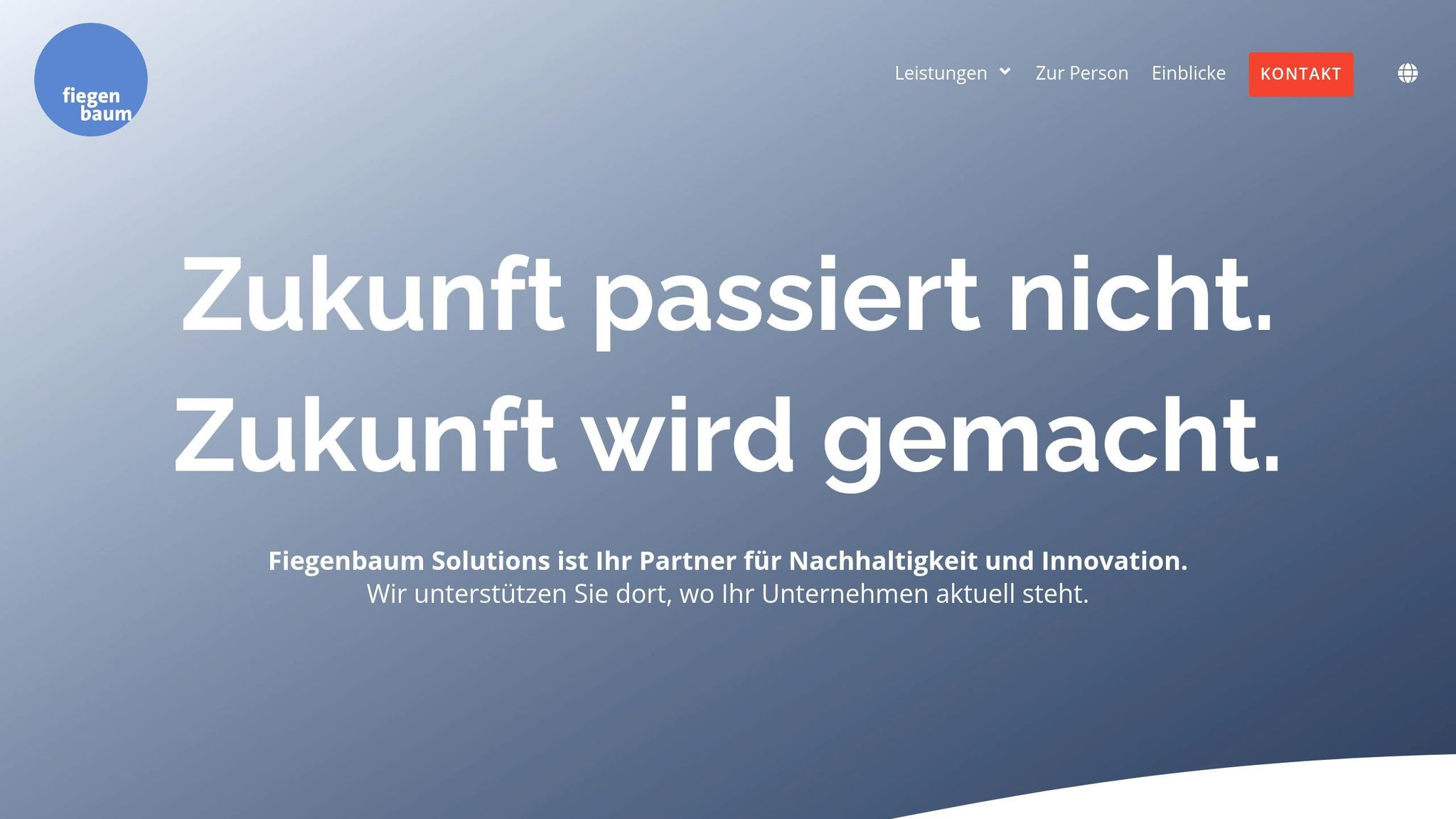Double Materiality: A Strategic Approach to CSRD Compliance in 2026
Starting in 2026, double materiality will become mandatory for companies in the EU – a concept that...
By: Johannes Fiegenbaum on 9/21/25 7:59 AM

Stakeholder feedback is the key to a successful ESG strategy. Are you wondering how to integrate the opinions of your stakeholders into your sustainability analyses? Here are the essential steps to systematically utilize feedback:
The goal: Transparency, trust, and an ESG strategy that meets your stakeholders' expectations – while simultaneously fulfilling legal requirements.
The foundation of every ESG materiality analysis lies in the careful identification and mapping of relevant stakeholders. This first step requires a structured approach that captures both internal and external stakeholder groups and evaluates their influence on the company.
A well-thought-out materiality matrix helps identify the most important stakeholders and makes their needs visible – a crucial factor for better assessing future challenges and opportunities. According to recent research by OECD, companies with robust stakeholder engagement processes demonstrate 23% better financial performance compared to those with limited engagement. Interestingly, more than 80% of CEOs view sustainability investments as a lever for better business results.
Below, we take a closer look at the central stakeholder groups and their specific expectations.
To systematically analyze different perspectives and expectations, stakeholders are divided into internal and external groups.
For German companies, it's particularly important to consider specific actors such as BaFin, industry-specific associations, trade unions, and local communities. Trade unions traditionally play a central role in German corporate governance and should therefore be included in the analysis. Research from the World Bank indicates that companies incorporating diverse stakeholder perspectives in their governance structures achieve 15% higher stakeholder satisfaction rates.
Stakeholder prioritization should be based on their influence – both on how strongly they influence the company and how much the company influences them. This mutual consideration is crucial for meeting CSRD requirements.
Once the relevant groups are clearly defined, the focus shifts to how to effectively engage with these stakeholders in dialogue.
The choice of appropriate engagement methods depends on the respective stakeholder group, their communication preferences, and the desired depth of feedback. A targeted communication strategy is essential here.
Careful documentation of all engagement activities is not only crucial for later analysis but also for meeting ESRS requirements. Transparency and traceability in stakeholder dialogue are essential here.
After completing stakeholder mapping, the next step is to capture feedback in a structured manner. Both qualitative and quantitative data play a role here – naturally considering German and European compliance requirements.
The relevance of systematic data collection is clearly shown in current figures: 85% of investors classify ESG reporting data as crucial for their investment decisions. Additionally, 88% of institutional investors consider ESG performance as an essential factor for their decisions. These values highlight how important it is to capture feedback precisely. The next step is to select the appropriate tools to implement this task efficiently.
The choice of the right tool depends on which stakeholders you want to reach, how detailed the data should be, and what resources are available to you. Modern technologies offer numerous possibilities for efficiently capturing and evaluating data.
Additionally, you shouldn't overlook existing company platforms. Systems like Google Analytics, social media data, CRM tools, or support ticketing systems often provide valuable information about your stakeholders' behavior. Supplementary analysis features like heatmaps or conversion tracking expand these possibilities even further.
High quality of collected data is crucial – not only for analysis but also to meet CSRD and ESRS regulatory requirements. This is a central factor, especially in Germany where regulatory requirements are strict.
Peter Drucker put it succinctly:
"If you can't measure it, you can't manage it. But if you measure it wrong, you'll manage in the wrong direction".
This statement particularly applies to ESG materiality analyses – inaccurate data can quickly lead to wrong strategic decisions.
With these steps, you lay a stable foundation for effective and legally compliant stakeholder analysis. The quality and traceability of data are the key to well-founded decisions.
After systematically collecting stakeholder feedback, the next challenge awaits: evaluation. The goal is to filter out and prioritize the relevant ESG topics from the multitude of feedback.
The numbers speak for themselves: Only 54% of companies transparently communicate how they handle their stakeholders' concerns, and 42% don't explain their process for identifying material sustainability topics. With the tightened CSRD requirements, however, this kind of intransparency is becoming increasingly problematic. Now it's about structurally evaluating feedback and establishing clear prioritization.
A central tool for ESG analysis is materiality matrices. They visualize evaluation results, facilitate prioritization, and make reporting easier.
A proven model is the traditional two-axis matrix, where ESG topics are evaluated on the X-axis according to their impact on the company and on the Y-axis according to their significance for external stakeholders. A further development is the updated materiality matrix, which maps the most impactful environmental, social, and economic topics on the X-axis and combines aggregated internal and external feedback on the Y-axis.
An example of successful implementation is provided by Unilever: The company has deeply integrated ESG topics into its business strategy, defined specific KPIs, and linked CEO bonuses to ESG goals such as CO₂ emission reduction. This not only promotes sustainability but also drives innovation and growth.
When prioritizing topics, you consider several factors, including:
Tools like heatmaps or scatter plots are suitable for better visualization, clarifying the relevance of individual topics.
| Assessment Method | Description | Application Area |
|---|---|---|
| Traditional Matrix | Two-axis model: X-axis = impacts on the company, Y-axis = significance for stakeholders | Basic analysis of ESG topics |
| Updated Materiality Matrix | Extended matrix focusing on environmental, social, and economic topics | In-depth ESG analysis |
| Table Ranking | Sorting by relevance score, based on criteria such as stakeholder feedback | Detailed prioritization |
Regular updates of your materiality matrix are essential to respond to changing framework conditions and stakeholder expectations. This is an important step, especially in Germany where regulatory requirements develop quickly. Double materiality must not be overlooked in this process.
The concept of double materiality is centrally anchored in the ESRS. It considers two dimensions: financial materiality (how sustainability topics influence financial performance) and impact materiality (how corporate activities affect the environment, society, and stakeholders).
Stakeholder analyses play a key role here. They not only provide valuable insights but also support regulatory compliance, strengthen trust, and make your company future-proof. ESRS 1 emphasizes:
"Materiality assessment is informed by dialogue with affected stakeholders. The undertaking may engage with affected stakeholders or their representatives (such as employees or trade unions), along with users of sustainability reporting and other experts, to provide inputs or feedback on its conclusions regarding its material impacts, risks and opportunities."
Although stakeholder engagement is not mandatory, it's recommended to act proactively to minimize regulatory risks.
When evaluating stakeholder concerns, three criteria are particularly important:
This structured approach reduces subjective assessments and creates an objective foundation for decisions.
Transparency toward your stakeholders is crucial. You should disclose how you use their feedback to build trust and strengthen participation. Continuous engagement also helps you identify new developments early and respond accordingly.
After prioritizing relevant ESG topics, the next step is integrating the gained feedback into your materiality analyses. The first practical step is updating your materiality matrix: Here you assign feedback to corresponding ESG topics and adjust weighting accordingly. It may happen that a topic internally considered less relevant suddenly gains importance due to strong stakeholder interest.
Create clear connections between stakeholder concerns and your ESG metrics. This translates qualitative feedback into measurable information that can be easily integrated into your reporting processes. Through this integration, you ensure that your reporting meets CSRD and ESRS requirements.

The CSRD aims to create more transparency and accountability in corporate sustainability. In July 2024, the German federal government presented a new draft law to adapt national regulations to the CSRD.
Stakeholder feedback plays a central role in meeting CSRD and ESRS requirements. Companies must disclose information about policies, risks, impacts, and results regarding ESG topics. The "Comply or Explain" approach applies here: You must either provide the required ESG data or comprehensibly explain why this is not possible.
For practical implementation, it's recommended to use digital tools for sustainability reporting. These help collect data efficiently and optimize the reporting process. At the same time, you should build internal competencies and promote collaboration between different departments to comprehensively meet CSRD requirements.
Transparency is crucial when it comes to successfully engaging stakeholders. Jozef Síkela, Czech Republic's Minister of Industry and Trade, emphasized:
"The new rules will make businesses more accountable for their impact on society and will guide them towards an economy that benefits people and the environment. Data about the environmental and societal footprint would be publicly available to anyone interested in this footprint."
Structured documentation begins with systematic recording of all stakeholder interactions. Keep protocols of conversations, surveys, and workshops. Decision matrices can help transparently show why certain concerns were prioritized higher than others.
For external communication, clear and accessible presentation of your CSRD reports is crucial for gaining stakeholder trust. Use different channels to spread your messages – from comprehensive sustainability reports to compact summaries tailored to respective target groups.
Regular updates to your stakeholders are a must. Inform them not only about results but also about progress in implementing their suggestions. At the same time, it should be ensured internally that all relevant departments understand how stakeholder feedback flows into the ESG strategy. This creates continuous dialogue that strengthens your sustainability strategy.
Integrating stakeholder feedback into ESG materiality analyses requires a continuous process of development. Since sustainability topics change dynamically, materiality assessments must be regularly reviewed and adjusted. At the same time, regulatory requirements are increasing: By February 2025, 20 countries have already transposed the CSRD into national law, while 10 others are still pending. These developments make it necessary to build systems that can flexibly respond to new requirements and expectations.
A central component of continuous improvement is establishing feedback loops that directly connect to the previous steps 1-4. Regular communication cycles with stakeholders are crucial for sustainably integrating their perspectives into the ESG strategy. Quarterly reports on progress and implementation of their suggestions create transparency and strengthen trust. Digital platforms also enable continuous collection of feedback and systematic evaluation to identify improvement potential.
Modern technologies like Artificial Intelligence (AI) and Natural Language Processing (NLP) support efficient analysis of this data and derive concrete action recommendations. Workshops or online sessions offer another opportunity to actively engage stakeholders, present progress, and jointly discuss new challenges.
"Incorporating feedback loops into the ESG program enables organizations to learn from their experiences and improve over time, fostering a culture of continuous improvement." – AMCS Group, December 2024
To meet increasing requirements, it's essential to monitor regulatory changes in real-time. Automated compliance monitoring tools can help track legal updates, align them with internal guidelines, and identify potential risks early. Against the backdrop of a projected 84% increase in ESG investments to $33.9 trillion by 2026, proactive compliance is becoming increasingly important.
Flexible structures within the company are key to success. A cross-functional ESG steering committee can discuss and implement necessary adjustments in regular meetings. Appointing a Chief Sustainability Officer (CSO) or ESG compliance officer ensures that ESG guidelines are consistently pursued.
Additionally, external resources such as industry associations or consulting firms can provide valuable support. Since current standards require comprehensive data collection, regular training should ensure that your team stays up-to-date.
Technical solutions like ESG compliance software provide real-time updates on regulatory changes and facilitate reporting through automation. Integrating such monitoring tools into ERP systems ensures smooth data flow. This combination of technical and organizational adaptation completes the continuous improvement process in your ESG strategy.
The strategic anchoring of ESG compliance in the overall business strategy is not just a compliance exercise. A current survey by Workiva shows that 97% of executives believe that sustainability reporting goes beyond mere compliance and creates real value.
Integrating stakeholder feedback into sustainability strategies is key to achieving credible and effective results. Based on analysis and practical implementation, the most important success factors can be summarized here, demonstrating the operational benefits of this approach.
A central point: Consistency ensures success. It begins with clear identification and mapping of relevant stakeholder groups. This is followed by structured collection and evaluation of their feedback, as well as prioritization through assessment models and materiality matrices. Consistent use of the materiality matrix ensures that both stakeholder and management perspectives are transparently considered in reporting.
Interestingly, a study by Beske et al. (2020) shows that disclosure of methods and results of materiality analysis in many sustainability reports still leaves much to be desired. This gap can impair credibility. Here, legal requirements meet strategic opportunities for development.
Double materiality – considering the impacts of ESG topics on the company and vice versa – remains a central benchmark for topic prioritization. At the same time, digital platforms for stakeholder engagement are gaining importance. They enable the inclusion of more diverse perspectives and increase traceability.
Companies that systematically incorporate stakeholder feedback can respond more specifically to relevant ESG topics and design their sustainability strategy more precisely. Regular adjustments to changing requirements ensure long-term success.
Practical implementation of this approach often requires external support – whether in organizing workshops, selecting suitable tools, or establishing feedback loops. Particularly important: The credibility and benefit of ESG reporting increase significantly when stakeholder feedback is not only collected but also demonstrably integrated into prioritization and strategy development.
Those who consistently implement these five steps not only lay the foundation for CSRD-compliant reporting but develop an ESG strategy that aligns with the actual expectations and needs of stakeholders. The result? Stronger credibility, better risk management, and sustainable business success.

After examining the steps for stakeholder integration, it becomes clear: practical implementation is often a challenge. This is exactly where Fiegenbaum Solutions comes in, supporting companies with solid methodological and regulatory expertise.
Johannes Fiegenbaum develops tailored ESG strategies and supports CSRD-compliant reporting. Stakeholder engagement is not viewed as a standalone measure but as a central building block of a long-term and future-oriented sustainability strategy.
Services include stakeholder mapping, selection of appropriate data collection tools, and introduction of assessment models for double materiality. Particularly helpful: The consulting considers both current ESRS requirements and the specific challenges that medium-sized companies often face.
Fiegenbaum Solutions combines regulatory security with entrepreneurial foresight. The goal: strategically use stakeholder feedback to achieve demonstrable climate impact while promoting sustainable growth.
The consulting structure is flexibly designed, making both project-based and long-term solutions possible – tailored to your company's development stage and resources. Special conditions are also available for startups with impact-oriented business models.
With a combination of data-driven analysis and practical implementation experience, ESG strategies emerge that not only meet regulatory requirements but also create real value for all stakeholders. This keeps your ESG strategy not only compliant but also future-proof.
To collect GDPR-compliant stakeholder feedback, it's important that you communicate openly and clearly what data is being collected and why. Be sure to obtain explicit consent from participants before beginning data collection. Make sure to only capture the data you actually need and avoid storing sensitive information without a legal basis.
Use secure and reliable tools for data management and regularly check whether the entire feedback process complies with data protection requirements. A well-understandable privacy policy and consistent protection of your stakeholders' privacy are indispensable.
Double materiality is a key concept in ESG materiality analysis. It connects two perspectives: on one hand, a company's impacts on the environment and society (Impact Materiality), and on the other hand, the financial risks and opportunities arising from ESG factors (Financial Materiality). This approach supports companies in making decisions that are both sustainable and future-oriented.
To successfully implement this analysis, several important steps are necessary:
The combination of these two perspectives not only helps companies meet CSRD requirements but also forms a solid foundation for long-term, strategic decisions.
To meaningfully use stakeholder feedback, it's crucial to set clear goals and establish a well-thought-out process for collecting feedback. Methods such as surveys, interviews, or workshops can be helpful. The insights gained should be regularly evaluated and translated into concrete measures. This keeps your ESG strategy current and able to meet ongoing developments and stakeholder expectations.
Furthermore, a culture of continuous improvement plays a central role. It not only promotes the willingness to respond flexibly to changes but also makes it easier to address new regulatory requirements and changing stakeholder needs early. Open and transparent communication flow and regular reviews of implemented measures help sustainably strengthen the trust of all stakeholders.

ESG & sustainability consultant specializing in CSRD, VSME, and climate risk analysis. 300+ projects for companies like Commerzbank, UBS, and Allianz.
More aboutStarting in 2026, double materiality will become mandatory for companies in the EU – a concept that...
A sustainability report is not just a legal obligation for companies—it’s also a tool to create...
How Do Companies Prioritize ESG Topics? The answer lies in two approaches: VSME (Value Stream...